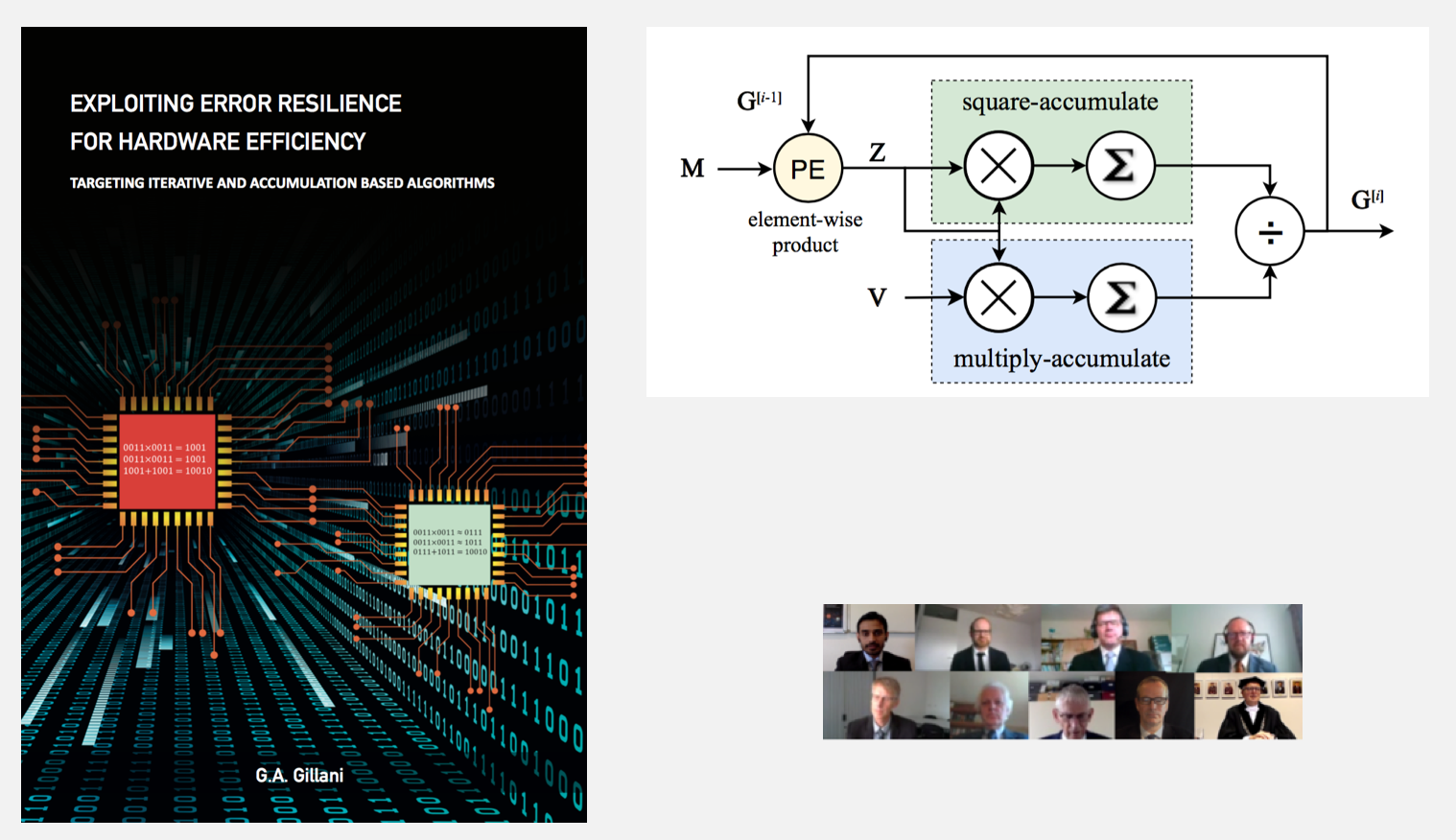Daily Image
24-07-2020Ghayoor Gillani thesis defence: approximate computing
| Submitter: | Albert-Jan Boonstra |
| Description: | The first phase of the Square Kilometre Array is expected to consume at least several megawatts of electric power. In order to reduce this amount and the associated energy bill, the U.Twente IMPEDRA project started several years ago, aimed at investigating approximate computing techniques. Indeed, it turns out that not all branches of the signal processing chains need to be computed with the highest accuracies, so energy savings in principle should be possible. Ghayoor Gillani looked into ways to apply approximate computing techniques without compromising the quality of the astronomical data. He investigated techniques such as circuit pruning, self-healing, accurate-approximate hybrid cores, and also looked into ways to analyse error resilience. The left picture shows his thesis (*) that he successfully defended on July 3rd. Given the pandemic situation, the defence was conducted via teleconference. The top right picture shows a schematic diagram for radio astronomy calibration (StefCal) in which the gain (G) needs to be estimated given a model (M), and observed visibilities (V). Ghayoor implemented the three computation blocks shown in the figure using both accurate and inaccurate cores, and showed that an energy saving of about 23% could be reached without compromising convergence to the optimal solution. Ghayoor also investigated internal self-healing for error cancellation in approximate accelerators, and showed an energy efficiency improvement of about 19% with a (negligible) Gaussian error profile, which is promising for the SKA SDP pipeline. As the architectures studied are aimed at ASICs, it would be interesting to conduct future work in the area of FPGAs. Although certain processing blocks are fixed, there still are opportunities to achieve energy savings similar to the ones demonstrated with ASIC designs. The IMPEDRA research was carried out in the context of the ASTRON/IBM DOME project and the NWO call Big Bang Big Data. (*) Doi: 10.3990/1.9789036550116 |
| Copyright: | U.Twente / ASTRON |
| Tweet |  |
